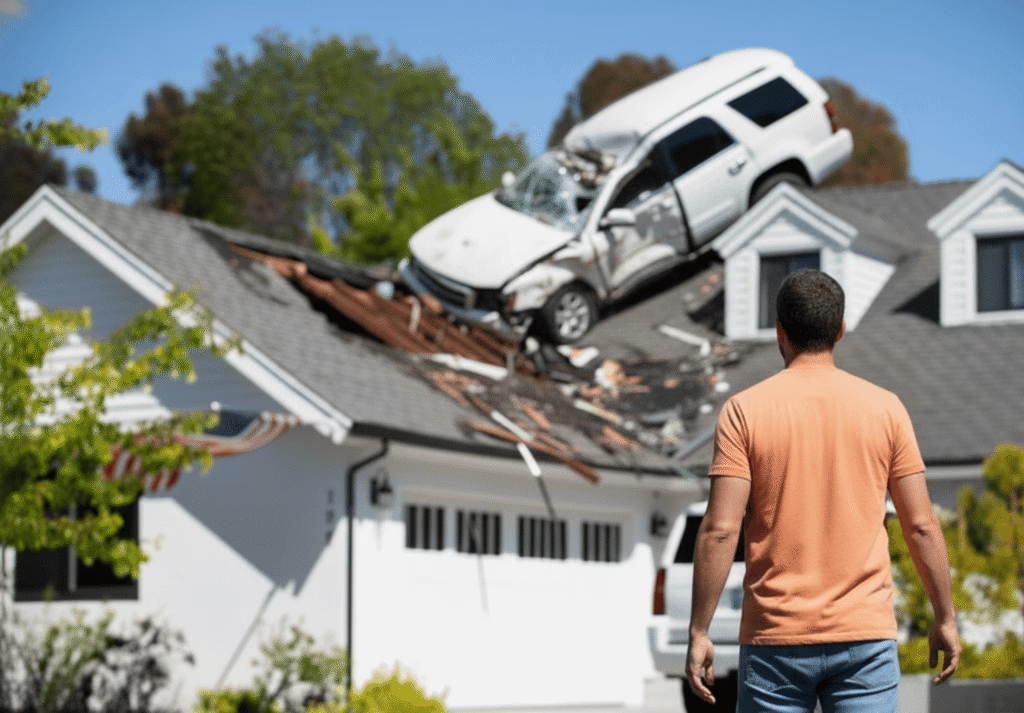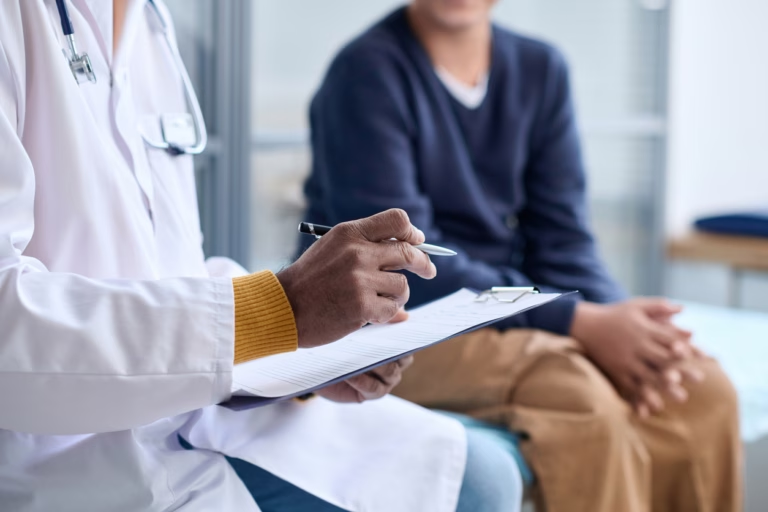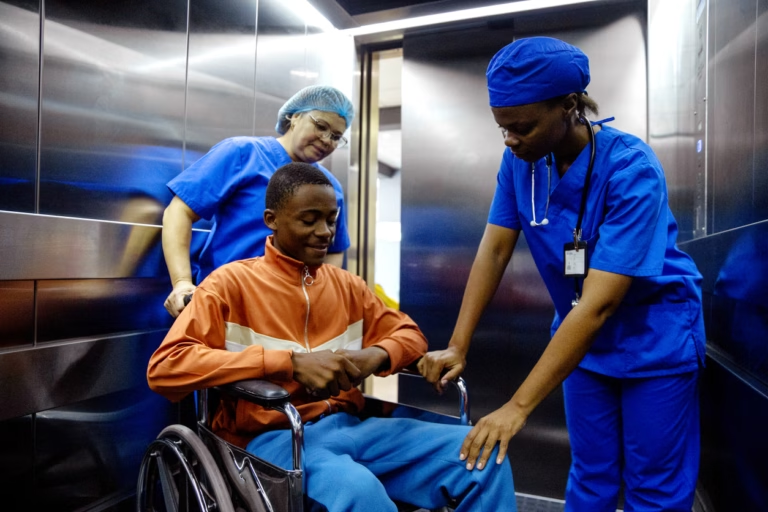In most cases, the vehicle owner’s insurance will cover the resulting damage. If the car owner’s insurance is insufficient to cover the resulting damage or injuries, the driver’s insurance company may step in. Car accidents can be one of the most challenging disruptions to regular life. The process after crashing someone else’s car can be even more complicated than a typical crash.
Difficult accidents don’t need difficult processes: call (818) JUSTICE today for a free attorney consultation.
Insurance Coverage and Legal Responsibility
When a borrowed car is involved in an accident, insurance coverage and liability can become complicated. Generally, auto insurance follows the vehicle, not the driver, but there are important exceptions that every car owner and borrower should understand. Knowing how coverage works and when personal liability may apply can help you prepare for the financial risks of a crash.
How Insurance Coverage Works in Borrowed Car Accidents
If you are not liable for the accident, the other party’s insurance is usually responsible for the accident. However, if you are liable for the accident, the insurance situation may be more complicated. In most situations, the car owner’s insurance serves as the primary coverage. So if the borrower causes an accident, the owner’s liability coverage will handle damage to the other driver’s vehicle, medical bills for injured parties, and other related costs, up to the policy limits. Depending on the type of policy, collision or comprehensive coverage may also apply to repair or replace the borrowed car itself.
If damages exceed the owner’s limits, the borrower’s own insurance may step in as secondary coverage. For example, the borrower’s liability coverage could help pay additional claims if the accident caused severe bodily injury or substantial property damage. Similarly, if the borrower carries medical payments or personal injury protection (PIP), that portion of the policy could cover their own injuries and those of their passengers. However, many insurance policies vary. So whether secondary coverage applies depends heavily on the borrower’s specific insurance.
When Are You Personally Liable?
There are situations where the borrower of a car may be held personally responsible for accident-related costs. One common example is when damages exceed the policy limits of the car owner’s insurance; the borrower may have to pay the difference out of pocket.
Personal liability can also apply if the borrower was not considered a “permissive driver,” meaning they did not have the owner’s consent to use the vehicle. In those cases, coverage may be denied entirely. The car owner can also be liable if they lent their car to someone who was not a competent driver. While letting someone borrow a car may seem like an innocent gesture, when in reality it’s negligent entrustment.
There are some accident situations that aren’t covered by insurance. For example, if the accident happened while using the car for ridesharing or deliveries, if the person driving didn’t have a license, or if the driver was specifically excluded from the policy, the car insurance company may refuse to pay.
Protecting Yourself After a Borrowed Car Accident
If you crash a borrowed car, your first priority should be protecting yourself, both physically and legally. Even though insurance usually follows the vehicle, the steps you take immediately after the accident can make a big difference in how personal injury claims are handled and whether you face personal financial responsibility.
After the collision, start by gathering as much information as possible to help determine liability. The details of who caused the accident will guide how the insurance policy responds, and whether you may be considered the at-fault driver. Document the scene with photos, exchange information with everyone involved, and get a copy of the police report.
If anyone suffers bodily injury, you’ll also need to make sure proper medical attention is provided right away. Remember that medical bills can become one of the largest expenses after a crash, and they may exceed policy limits in serious cases.
Once the immediate emergency is handled, review the car owner’s coverage to see whether liability, collision, or comprehensive insurance applies. If damages surpass the available coverage, you may be personally responsible for the remaining costs.
Don’t forget to speak with a car accident attorney as soon as possible. An attorney can explain your rights, help negotiate with insurers, and protect you from being unfairly saddled with costs just because you were the person driving at the time of the accident.
When to Contact a Car Accident Lawyer
Any time you’re in a moderate to severe motor vehicle accident, you should consider consulting with an attorney. Handling the process after an accident can be difficult and time-consuming. A skilled personal injury law firm can give you the best chance at fair compensation for emotional injuries as well as physical ones. A powerhouse law firm like Lawyers for Justice, P.C. is equipped to handle any personal injury case.
Car accidents can be expensive. Between medical expenses, lost wages, and property damage, even a small crash can be expensive. Without an attorney, it can be difficult to navigate the claim process.
If you or someone you know was in a motor vehicle accident recently, call (818) JUSTICE for a free consultation.
Crashing a Borrowed Vehicle Under California Law – FAQ
does comprehensive insurance cover accidents in a borrowed car?
Comprehensive coverage generally protects against non-collision events like theft, fire, or vandalism, but it does not pay for damage caused by an accident while driving a borrowed car. In most cases, accident-related costs are handled through liability coverage and collision coverage under the car owner’s policy. If damages go beyond those limits, the borrower’s own insurance may apply as secondary coverage.
am i covered if i didn’t have permission to drive the car?
In most cases, insurance does not apply if the person driving the car did not have the owner’s permission. However, some policies recognize the concept of implied permission, meaning that if the car owner has allowed the borrower to use the vehicle in the past, or if the circumstances suggest that permission was assumed, coverage may still apply. The exact outcome depends on the insurance policy language and how the insurer interprets the situation.
what happens if the person driving is unlicensed?
If the person driving the car did not have a valid driver’s license, most insurance companies will refuse coverage for the accident. Without insurance, the unlicensed driver and the car owner may be personally responsible for paying damages or covering injuries. In addition, the unlicensed driver may face fines, penalties, or even criminal charges for driving illegally.
Last Updated on October 7, 2025



